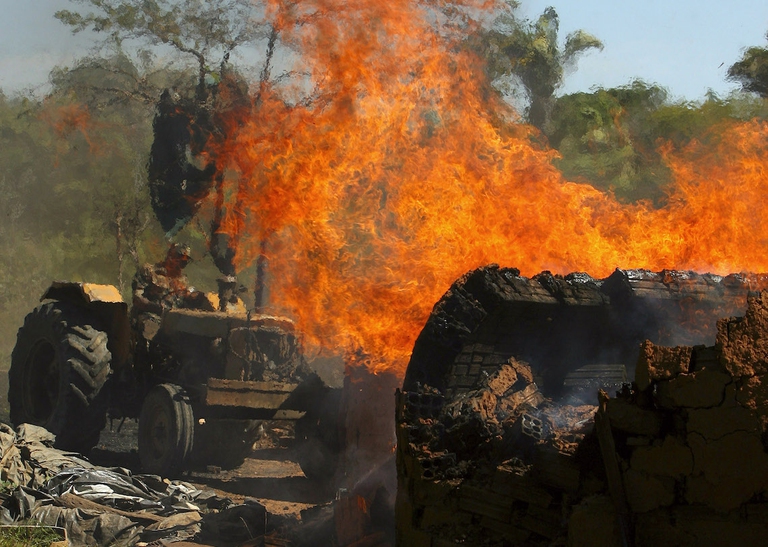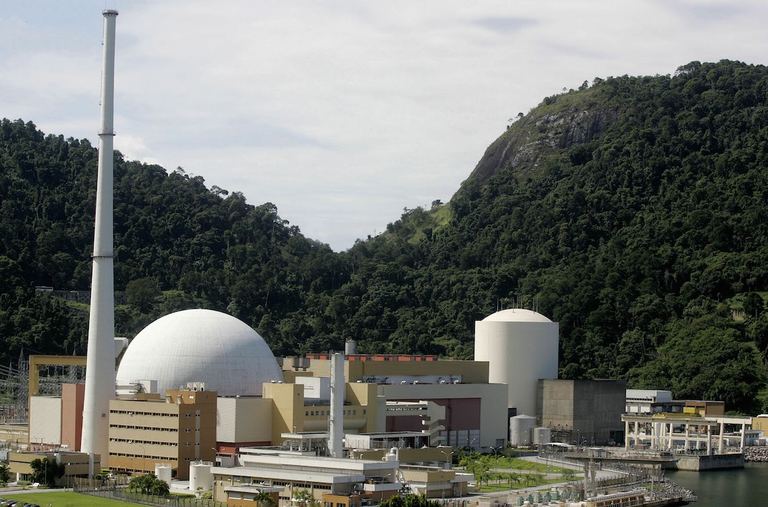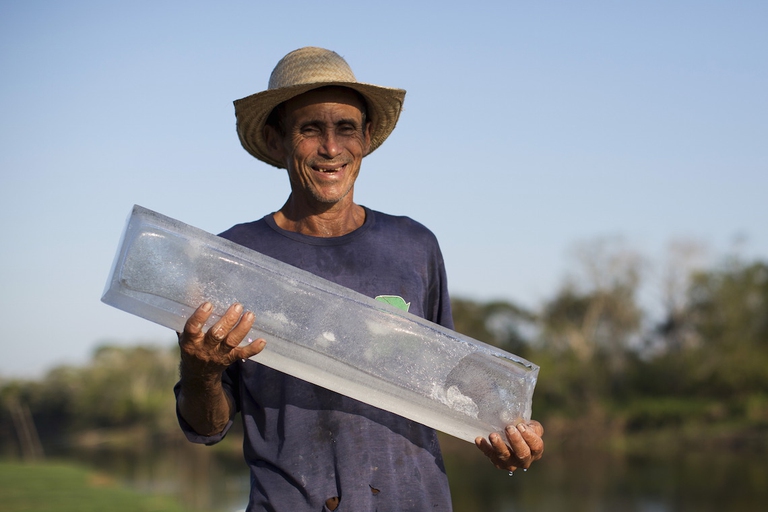
The Amazon became an alternative classroom during the pandemic. Now, the educational forest in Batraja, Bolivia, lives on to teach children and adults the value of nature.
The history of energy in Brazil: “the oil is ours” Brazil drilled its first oil well in 1897 in Bofete City and in 1953 the oil and gas giant Petrobras was founded under the slogan “o petróleo é nosso” (the oil is ours). Over the years, Brazil diversified its energy matrix. Starting from the 1940s
Brazil drilled its first oil well in 1897 in Bofete City and in 1953 the oil and gas giant Petrobras was founded under the slogan “o petróleo é nosso” (the oil is ours). Over the years, Brazil diversified its energy matrix. Starting from the 1940s it supported the United States’ nuclear experimentations by providing mineral resources. In the mid-1960s, the government introduced tax incentives to support a Deforestation Programme to provide industrial wood energy. After the 1960s it focused efforts on investments in hydroelectricity through state-owned utilities.
The “Brazilian miracle” – a period of annual GDP growth exceeding 10% – ended because of the 1973 oil crisis, when Petrobas risked bankruptcy. At that time Brazil decided to focus on the development of alternative energy sources, mainly sugarcane ethanol. It inaugurated Itaipu, the biggest hydroelectric plant in the world, in 1982 and two years later its first nuclear plant in Rio de Janeiro State. In 1992 the country installed its first wind turbine.
At the end of the 1990s Brazil underwent energy liberalization, ending Petrobras’s monopoly on oil and gas extraction, though it maintained control of key energy plants and the price of certain energy products. Starting from 2002 the government encouraged the development of renewables through the Programme for Incentive of Alternative Electric Energy Sources (Proinfa). In 2003, for example, Brazil introduced flexible-fuel vehicles, innovative vehicles able to run on more than one fuel, including ethanol.
In 2007, Brazil launched the ambitious National Energy Plan 2030 with the aim of increasing energy production and nuclear energy capacity by 2030 through the completion of four new nuclear plants. In order to avoid dependence on hydroelectricity, Brazil continued its energy portfolio diversification by holding its first wind-only energy auction and implementing biomass investments in 2009.
A review of the National Energy Plan 2030 was commissioned in 2012 in order to take into account the increase of renewable sources and consequences of the 2011 Fukushima nuclear disaster. This process is ongoing.
Coal is the most widespread fossil fuel in Brazil after oil and gas, and it covers 5.7% of the energy matrix. Brazilian mineral coal reserves (approximately 32 billion tonnes) are located in the south of the country, in the states of Rio Grande do Sul, Santa Catarina and Paraná. Currently, Brazil produces 3 million tonnes of oil equivalent (toe) of coal, and it compensates a coal consumption of 13.4 million toe through imports. Total internal coal supply is about 17 million toe, with six operative plants and seven registered as under construction in 2014. Brazilian gross coal production has generated about 4,500 direct jobs.
Coal mining strongly impacts the environment and local communities. Brazilian coal is characterized by a high metal content and when the waste derived from mining is not correctly disposed of it contributes to acid mine drainage. Over 120 years, unregulated mining activity and lack of accountability have led to the contamination of Brazilian waterways and affected local food supplies. Furthermore, intensive coal extraction has changed the morphology of the land: combined with improper waste disposal, this increases land erosion and the instability of rivers and streams.
Coal production has also affected workers and local communities’ health, increasing the incidence of respiratory diseases and metal-related cancers. It is estimated that 30% of medical procedures in cities in Santa Catarina State are carried out in response to respiratory problems. Coal mining activity has also impacted local communities, compromising the local economy based on fishing with water contamination and causing displacement from ancestral lands.
Oil accounts for 39.4% of Brazil’s energy needs. Together, oil and gas supply most of Brazil’s energy (52.9%). About 90% of oil and gas reserves are located offshore, mainly near the state of Rio de Janeiro. In 2014 Brazil was the second-largest producer of petroleum in South America with 15 billion barrels of proved oil reserves, producing 2.95 million barrels of petroleum and other liquids per day. The United States Energy Information Administration (EIA) estimates that Brazil had 16 trillion cubic feet (Tcf) of proved natural gas reserves at the beginning of 2015, and in 2014 it produced 1.13 Tcf of natural gas, up 13.2% from 2013. In 2014, the total internal energy supply of oil and gas as well as oil products – including imports and exports – was 161 million toe, whereas consumption reached 137 million toe.
According to Petrobras oil and gas have a positive impact on reducing unemployment in Brazil: over the last year this sector has created about 80,000 direct jobs and approximately 320,000 indirect ones. In contrast, 16 major oil spills involving Petrobras plants, causing water contamination and damaging marine flora and fauna, occurred between 1975 and 2001. Moreover, oil and gas exploration activities may affect local communities if the preventive consultation principle is not respected.
This was the case in Juruá Valley, where the Brazilian government sold off protected areas adjacent to the ancestral territories of uncontacted indigenous people. Last December a court decided to revoke the concessions granted, ordering the suspension and cancellation of further exploration and production activities highlighting the social and environmental risks related to these, such as damage to local ecosystems and the daily life of communities.
Nuclear energy represents 1.3% of energy supply and is produced by two water reactors in Angra, Rio de Janeiro State. Uranium exploration, production and exportation is under state control. In 2007, Brazil launched the ambitious National Energy Plan 2030, confirming its goal of increasing internal energy production and reaching an additional nuclear energy capacity of 5,345 megawatts (MW) by 2030. In fact, a third reactor is under construction, expected to become operational in 2018 and generate about 9,000 new direct jobs. A total of four plants were registered as being in the planning phase in 2014.
Over the years there have been environmental and social problems related to the mining, storage and transportation of radioactive material. In Minas Gerais, for example, there is the biggest radioactive waste deposit in the country and in 2011 Indústrias Nucleares do Brasil was fined because of storage facilities’ poor conditions. Moreover, Greenpeace has denounced the environmental effects of the Caitité mine in Bahia State, around which drinking water contains seven times as much uranium as the limit established by the World Health Organization.
Since the 1980s at least 10 radiological incidents have occurred in Brazil. In 1986, for example, about 25,000 liters of radioactive water accidentally leaked from the Angra plant. And in 2013 local NGOs highlighted the insufficiency of safety measures after a night watchman fell into a pool filled with radioactive fluids.
Brazil is the country with the world’s highest production of energy derived from renewables (39.4%), compared to an average of less than 20% for the rest of the world. It has adopted a policy of diversification of energy supply and production, becoming the seventh country in the world in terms of investments in renewables in 2014. According to the United Nations Environmental Programme (UNEP), Brazil invested 7.6 billion dollars in clean energy, an increase of 93% compared to 2013.
Sugarcane ethanol – an alternative fuel derived from sugar – is the second energy source in the country (15.7%), preceded only by oil. Hydroelectricity is the second source of renewable energy (11.5%), followed by charcoal (8.1%). Energy consumption from sugarcane and its derivatives is 42 million toe, compared to 45 million from hydroelectricity, with a total supply of energy derived from sugarcane of 48 million toe and 35 million toe from hydroelectricity.
Renewables have a positive impact on Brazilian employment. According to the International Atomic Energy Agency, for example, ethanol production (including agriculture and industry) creates about 1.5 million jobs.
Renewable energy in Brazil has been characterised by instances of land grabbing, deforestation and inadequate resettlement affecting indigenous communities. In a number of cases national authorities have violated the preventive consensus principle, depriving local communities of their ancestral lands without prior consultation. The Belo Monte hydroelectric complex, for example, affected 25,000 indigenous people belonging to 18 ethnic groups: with the aim of producing cleaner energy and reducing environmental impact, the renewable plant has actually compromised water quality and local biodiversity, drastically altering life along the Xingu River.
During COP21 President Dilma Rousseff confirmed Brazil’s commitment to avoiding the risks of climate change and increasing renewable energy up to 20% of total requirements by 2030. The country has set a target of reducing greenhouse gases 37% by 2025 and 43% by 2030. Rousseff also announced the government’s target of zero deforestation by 2030.
Brazil has one of the most diversified energy portfolios in the world and has always invested in alternative energy sources despite its richness in oil and minerals. It seems it will maintain its diversification policy in the near future, and in order to satisfy its growing internal energy demand it will invest in renewables, conventional thermoelectric capacity and nuclear energy. It is also integrating more fossil fuels into its energy system in order to reduce reliance on hydropower.
If Brazil continues investing in diversification it will maintain its pole position as South America’s economic engine. If the country also improves efforts in emissions reduction and avoids environmental and social risks related to economic development and energy production, it could became a world pioneer of sustainable growth. At the moment it seems that its targets for abandoning fossil fuels and opting for an energy portfolio dominated by renewables aren’t so ambitious, even if its geography would allow for it.
Siamo anche su WhatsApp. Segui il canale ufficiale LifeGate per restare aggiornata, aggiornato sulle ultime notizie e sulle nostre attività.
![]()
Quest'opera è distribuita con Licenza Creative Commons Attribuzione - Non commerciale - Non opere derivate 4.0 Internazionale.
The Amazon became an alternative classroom during the pandemic. Now, the educational forest in Batraja, Bolivia, lives on to teach children and adults the value of nature.
Our species took its first steps in a world covered in trees. Today, forests offer us sustenance, shelter, and clean the air that we breathe.
Bangladesh suffered widespread damage as a result of Cyclone Amphan. Yet the Sundarbans mangrove forest acted as a natural barrier protecting the country from further destruction, as it has done countless times before.
On top of a 2.4 million dollar compensation, the indigenous Ashaninka people will receive an official apology from the companies who deforested their lands in the 1980s.
The tapir was reintroduced into Brazil’s Atlantic Forest, the country’s most at-risk ecosystem. The species can play a key role in the forest’s recovery.
Forests are home to 80 per cent of the world’s terrestrial biodiversity. This year’s International Day of Forests highlights the urgent changes needed to save them.
After a legal battle that lasted two years, Indonesia’s Supreme Court has revoked the permit to mine for coal in the forests of South Kalimantan in Borneo.
The 26th edition of the United Nations Climate Change Conference, COP26, will be held in Glasgow, Scotland in November 2020. The pre-COP will take place in Milan, Italy.
The list of human and animal victims of the Australia wildfires keeps growing – one species might already have gone extinct – as the smoke even reaches South America.














